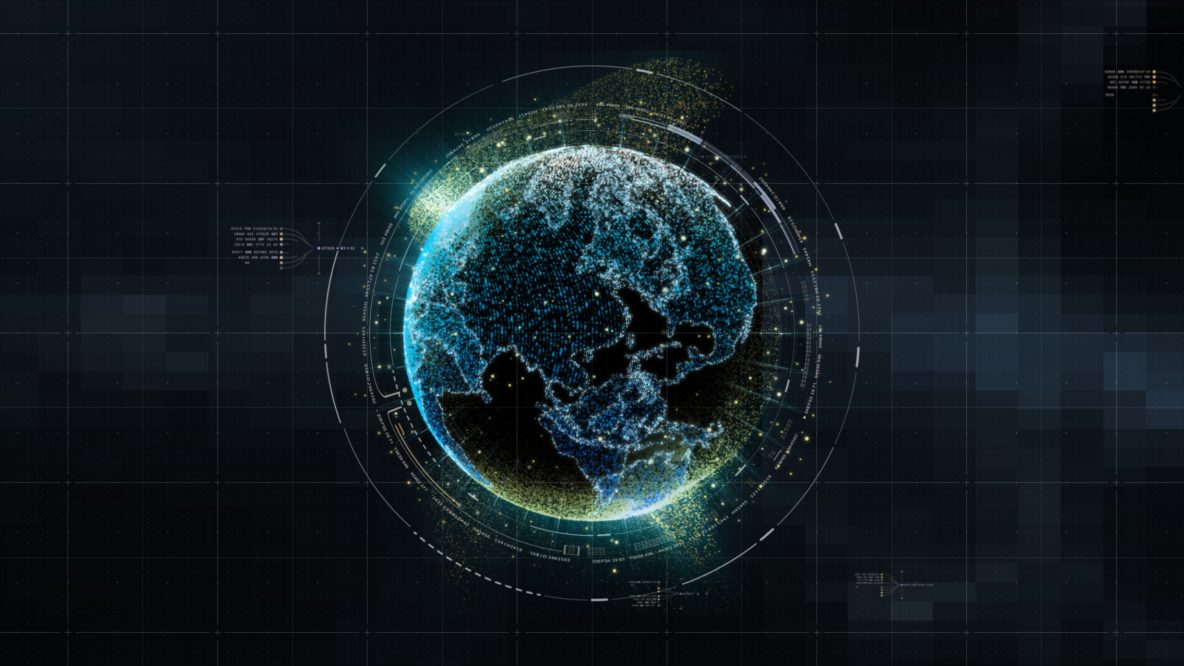In 2022, a new and revolutionary technology breakthrough is set to revolutionize the way businesses and society operate. This breakthrough promises to revolutionize communication, transportation, healthcare, and energy, among other industries.
The technology breakthrough is based on an advanced form of artificial intelligence (AI). AI has been used for a variety of purposes for many years, but this particular breakthrough is set to take AI to the next level. It’s called “deep learning” – a type of AI that allows machines to learn and improve on their own. Deep learning uses a variety of algorithms and data structures to analyze large amounts of data and reach conclusions faster and more accurately than ever before.
This technology breakthrough is expected to have a major impact on the way businesses and society operate. For one, it’s expected to drastically reduce the cost of operations in many industries. By automating processes, deep learning can help businesses save on labor costs, as well as reduce the need for certain human resources. In addition, AI can be used to better analyze data and make predictions about the future, allowing businesses to make smarter decisions.
The technology breakthrough is also expected to have a major impact on communication. AI can help machines understand natural language, allowing for more efficient and accurate communication between people and machines. This could be especially useful for customer service, where AI can be used to understand customers’ needs and provide them with the best services.
Transportation is another area that the technology breakthrough is expected to make a big impact. AI can help with autonomous driving, allowing cars to drive themselves safely and efficiently. This could drastically reduce the number of accidents caused by human error, while also reducing traffic congestio
Healthcare is also expected to benefit from this technology breakthrough. AI can help analyze medical data and diagnose diseases faster and more accurately than ever before. This can help doctors make better decisions about treatments and allow for better disease prevention.
Finally, energy is another sector that is expected to benefit from the technology breakthrough. AI can help analyze energy data and optimize the use of energy resources, resulting in more efficient energy usage and reduced costs. Overall, the technology breakthrough in 2022 is expected to have a major impact on businesses and society as a whole. By automating processes, reducing costs, and improving communication and transportation, this breakthrough promises to revolutionize the way we live and work.
Cloud Based Remote Recruitment Solution
With the 2020 Covid epidemic we are faced with the new normal. Clients, contacts, companies, and candidates are communicating and interacting in many different ways. Gone are the days where you travel for hours to your work and back per week.
How do we tackle corporate recruitment in an effective scalable way? A nimble solution for recruitment is required to allow for full scale remote office, admin and recruitment while maintaining contact with everyone. A high availability and secure cloud based system. Security on cloud based systems, where you can control the data and give full access to each individual who has data with you. They decide what they want to share, and take off or even add. With hacking going rife all over the world you don’t want to be the one spilling a lot of information about people.
Not only do you need to focus in experience of your potential employees but also on the people working with you. With a cloud based recruitment system designed from the ground up to excel a remote workforce you now have access to potential personnel from all over the world. Suddenly you can employ people from all over the world, get the best of the best. Potentially at a much lower cost. Or you can simply let some people work half day, or x amount of hours per week. This all sounds great but how do you track it. As a manager, business owner or department head how do you know who did what when people are not under your nose.
Introducing Koneqt’s Cloud Based Remote Recruitment Solution. Born of the best of breed Applicant Tracking System, Remote Management , Project Management, Audit, Business Process Automation platform inside Koneqt. Run thousands of surveys, a job board, simplify internal communication, access portals to various role players. This cloud based recruitment system offers it all. Koneqt is built around Governance, Compliance, Auditing and Risk. Your data and each move over every single part is recorded in the audit engine. You can see in an instant who did what and when. It has not been this easy to integrate the gig economy methodology into your current workflow.
Relevant reporting screens will assist with who is doing what when and where. Keep abreast with current workflows in your company. Employ full time, gig economy or just plain commission personnel all over the world easily.
This is truly the new normal. Contact us today for an introduction and demo on the Koneqt Cloud Based Recruitment Platform
Email – the convenience trap
Using the right tools for the wrong reasons.
This series is about working in teams, working remotely in an effective manner. It is something I have been working on daily for many years. How do simplify teams? How do we work together when we are decentralised? When we can see each other. How do you track what your team mates are doing? How do you communicate in a way that people understand? What do other do with your communication you’ve sent to them? How do others know when we are working on requested tasks sent by them? Why do we have to get our reminder system to email us a reminder? Especially when the reminder system is your task management system?
”After everything has been said and done, much more has been said than done”
Should we always take the easiest way of logging tasks?
More often than not we get caught up in the convenience trap. We use tools that we like or are used to for things they are not supposed to be used for. Take Outlook for example. It is a great tool, it is amazing at what it does. More often than not Outlook becomes our email client, document storage facility, a reminder tool, a place to store future ideas, to store tasks we need to do – the list goes on and on. Somehow between using categories, folders and todo’s we perceive that we can in fact track all we need to do through our email client.
This is something that is not just relating to Outlook but an email usage problem. We don’t have a way to effective do handle our emails. We don’t have a good enough methodology on how to create tasks, events, store documents and other various types of information.
We overload our email system with things that should not be there.
On top of this we usually have a vague idea on what tasks need to be done and somehow try to focus on that which we think is important now. Things come at us at pace and emails get checked every few minutes or at least every hour. Emails are determining how we respond to the rest of the world.
Is email the best task manager ever made?
To get out of this trap we need to use tools for what their purposes are. Outlook is an email client, so is Gmail, Yahoo Mail etc. Use it for that. To respond and send emails. Don’t use it as a storage facility. Definitely don’t use it as a task manager. Do not use it to keep track of what you need to do and what you have done. When you have any given email that needs to be done or responded to at a specific time and date, that should be your cue that it belongs in a Calendar. Whichever calendar you use is up to you. There are many different flavours and depends on your liking. I use Google Calendar. Teams I work with use Outlook Calendar. Some people is their iPhones calendar. It does not matter, as long as there is a simple easy way for you to get the email’s info into you calendar. Simple. Now daily review your calendar for that day.
Should we use our calendar as a task manager?
What to do with tasks that has no date and time specific needs. If it is only date get this into your task management system or method. The one place you go to to review your current tasks that need to be dealt with. The place where you can store future tasks as well as review tasks for this week, month, quarter and year. This will be a good place to keep in mind your most important vision type tasks that span over a year. Once you have all your tasks together things become significantly easier. You know where to go to review and view your current daily requirements of things that need to be done.
Do you have hundreds of tasks coming at you? Using this methodology is even more important?
Document management and setting up corporate procedures for this is extremely import. Document management is a well covered and researched environment. There are many tools available that would be far better to use than email as a storage facility.
Remote Workforce – what steps to take
Remote workforce what not to do Part 1
Past mistakes
In the early days – that is 10 – 15 years ago being fully on the cloud and paperless was not an easy fete. Back then Evernote came out and a few other role players. I was definably an early adopter with all the pains that went with that. I messed around with quite a few apps (as everybody did) and finally settling on Evernote to scan all my documentations into it. So many other companies got bought, taken over or something in between which wreaks havoc on your processes when you heavily rely on it. But Ive never looked back. I do not advocate to use Evernote, these days there are many different types of notebooks out there than can easily be used. I have found that Evernote still stays my goto depository for paper and other notes. Guess it is a matter of better the devil you know.
Today 2020
Getting to 2020. Things have drastically changed. Covid a household name these days has hit practically the whole world. Previously the risk of not being able to the office was non existent and hardly ever spoken about. It is a different story now. Every company that did not have a remote thought process on teams got effected one way or another.
I am writing this blog not to tell you what to do but what to add to your planning and thinking process along the way. Personally I go with what is practical. In my daily life have no real bias towards different softwares as long as it is useful, can work collaboratively and easily auditable. Obviously as cost effective as possible.
The jump from office, server based though process to cloud is not an easy one. It should also not be taken lightly. However, I have been in scenarios where a client moved over to the cloud within 3 days. This from a fully paper based thought process. It was an aggressive decision from the owner, he has never looked back. To date this has been one of the more successful adoptions to cloud I have seen, and much of it I can ascribe to his leadership around the subject. He just did not back down at all cost.
Questions to review
For me it is key to answer just a few simple questions.
1. Does it work in a team
2. Can they collaborate at the same time in it
3. Do I control my data – what are the clauses
4. Is if fully cloud based (Offline / Online) for me these days is not really a concern.
5. Can you audit with great reporting
What would be your next steps?
For a remote workforce to get going you will need a good central management system. By this I don’t mean get people on a basic task management system. As most companies who jumped to systems like Asana and the likes. Asana is a brilliant tool, I have been part of various teams using it. Where these types of tools drop short is when you start working in larger teams. You need proper audit type overview and reporting. You want to do workflows etc. When you have more than 50 odd tasks that you have to do. More often than not the basic task based systems fall apart when you have more than a 100 -150 tasks you are managing. From the ground up it was simply not designed for that. Although these basic task based systems can handle thousands of tasks, i.e. you can log them in there. The effort it takes to stay up to date and knowing what others have done differs from useless to downright extremely difficult. Visibility to other parts of your company is extremely low.
This is one of the main reasons why I keep coming back to the Koneqt system. It is extremely quick, most of the time faster than a programmed like Outlook that you’ve installed on your laptop. Anything can relate to anything in the system. You can related a Project Task to a company, user, opportunity, timesheet etc. There is no limit in the direction that you can relate things to each other. This is an extremely powerful thought process and methodology.
Relevance comes with relationships.
Adoption of Koneqt is extremely quick. Often it is a 10-30minutes training session to get someone going. An adoption to a remote workforce can happen in one day without issues. You can bypass the use of internal emails almost in totality. Have full audit overview of what people are doing or not doing. It can easily be adopted as your central management system for all your daily tasks.
Worst way to manage tasks – use email?!
Ive seen over and over that many people use their emails in one way or another as tasks. These are things I see all the time. You have an important email coming in, drag it to an important folder or follow up folder to look at it later. 5 minutes later an email for a request from a client comes in. That gets dragged or tagged for yet another folder and so it goes on. Sometimes people respond immediately and will be waiting for a response on that email. The different uses of email as a task storage goes on and on and on.
How do you?
How do you effectively collaborate? How do you track what is going on? How do you know what you are waiting for and what is simply not that important? What is important, but not now? What is important and urgent? What are things you would just like to store for next month, in 6 months or even just to review later but not now? We have not even looked at what happens in a team environment. What happens when you start working remotely. Although you can manage (If you are an island) – emails can’t:
– Track task progress
– How do you prioritise between different tasks
– How do effectively delegate and track?
– How do see company wide traction?
– How do you set deadlines?
– How do you adjust the schedule?
– How do you organise a large project via email?
The Problem
In todays society this is a big problem. We don’t get 10 or 20 emails per day. We deal with hundreds and thousands of emails. I do not know how often I see email inboxes with 3K+ emails unread. As soon as you are part of a team then suddenly you have those emails to deal with. One of my clients before almost completely doing away with emails in his company was sending over 600 emails over a weekend to his colleagues. During the week he would have usually ended up with over 900+ unread emails to be dealt with.
Management and Collaboration
As a manager this is a nightmare. How do you manage your tasks and make sure that others do theirs? As C-level professionals what steps do you take to make sure that people are actually doing their work.
Statistically it shows that the average person in their lifetime looks for something. That is 365 full 24 hour days in your lifetime that you will be looking for something if it is not properly placed and marked.
Many people just leave their emails unread and deal with them one by one. Some people sort them. The problem stays these emails are treated as task.
Forwarding and responding and Email threads are hard to follow. You always have this one person that cc’s, or bcc’s half the workforce in an email. This is close to impossible to track and manage.
Information overload is a major problem. Unprocessed and well documented information is an even bigger problem. This generally becomes garbage and you seem to deal with only those things that come flying at you at a 100 miles an hour. The things that your boss puts you on the spot with. You respond to those. The major problem here is that company wide it means that possible important things fall on the ground daily. This in the long run means large amounts of work that did not get done or was not done properly and in time in the first place.
Change Your Ways
– Find a proper system
– Move away from emails as tasks management tools.
– Find generic and company wide ways to deal with tasks
– Have a way to track metrics
– Get a company wide overview of what was done and need to be done
– Move to an outcome based approach
Koneqt Management System provides this type of solution. We have successfully moved various companies off practically all internal emails to start with. They now have a central way to track what needs to be done and what was done. https://www.koneqt.com/products/work-remotely-gig-economy-virtual-office-provisioning/




